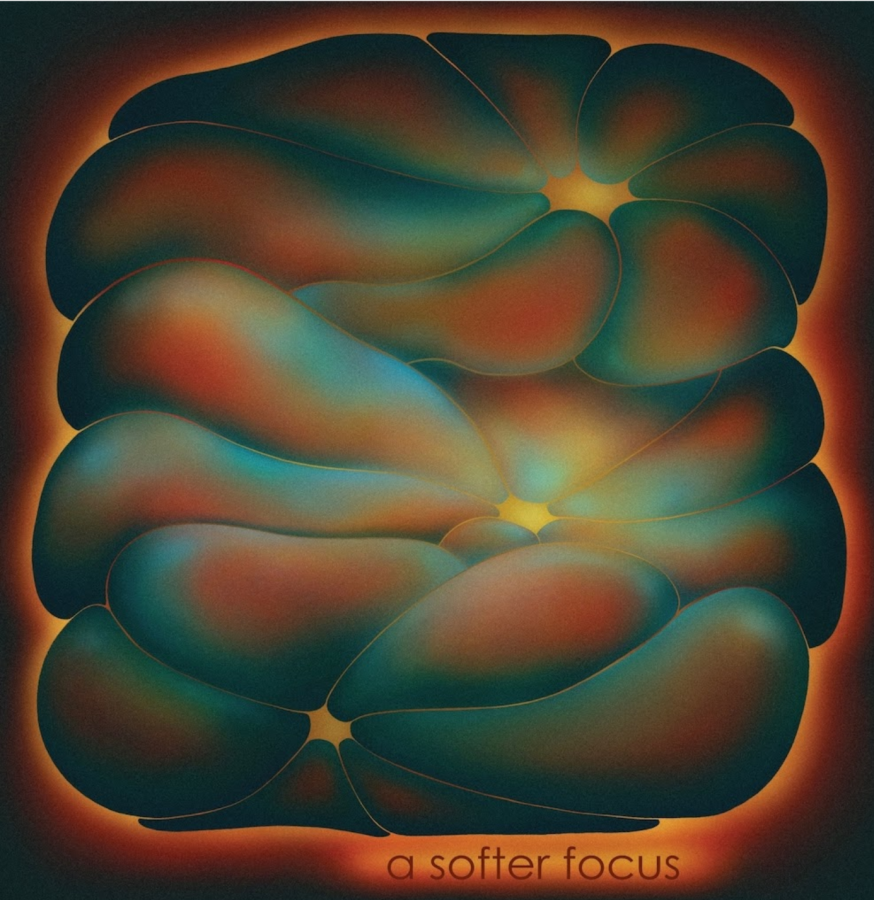In her own words, San Antonio artist, claire rousay (stylized in all lowercase) “is a person who performs and records.” She is a skilled percussionist and composer who makes use of her excellent ear for recorded sound to conjure sonic landscapes from the material of everyday life — sounds from a kitchen, garage, desk, bathroom, or just outside the living room window. Her music prioritizes emotional immediacy, and on “a softer focus,” she has chosen to ruminate on the strange ways that isolation has intensified our fractured relationship to space in the digital era. Much of her discography can be placed within a broader tradition of experimental collage-based music, but “a softer focus” is a more composed release which explores diverse instrumental stylings in service of something more grounded; a classical album which seeks to stimulate the humanity often buried within digital experience.
The first time I heard claire rousay’s music was at Me Mer Mo Monday, a weekly event once held at Volstead Lounge which served as an informal hub for Austin’s underground experimental music scene. The awkward tension between Me Mer Mo and the rest of East Sixth Street would make itself apparent whenever a bachelorette party or frat crew would stumble upon a free jazz or noise set by accident, yet on occasion these two worlds would converge amicably. In the middle of a particularly spacey duet with more eaze, claire set her White Claw down and began scrolling through her phone, but instead of a field recording or a sample, Charli XCX came blaring out of the Aux cord. claire proceeded to play the entirety of Charli’s debaucherous electropop anthem “5 In The Morning” before eventually transitioning back into an abstract jam.
On one level, this was simply a fun moment — I love Charli XCX and I was also drinking White Claws — and everyone in the room was smiling. But I was also blown away by the boldness of this decision to insert an untouched pop song into claire and more eaze’s exercise in sonic manipulation. There is a moment on the track “peak chroma” which took me back to this avant-pop crossover: after two and a half seamless tracks of typewriter field recordings, wistful piano and swelling strings, claire’s heavily autotuned voice enters the mix and she begins to sing a melodic verse by crooning “I’m trying not to miss you / I put on the newest blackbear song”.
A staged eavesdropping ensues, and we hear two or three auto-tuned voices whirl around one another as they casually express different attitudes towards posting on social media. One of them has a habit of deleting her posts as soon as they go up online, as she feels uncomfortable extending her sense of self into online space. More bluntly, the final track “a kind of promise” pokes at similar anxieties of technological representation — a beautiful melancholy piano and string miniature is brought to a violent halt by a warbling cassette tape.
On “a softer focus,” recorded space is not limited to the conventional set of environmental sounds (oceans, insects, birds, traffic, etc.) which conventionally signify space or nature, though it does make extensive use of them. As social media usage has further settled into the environments where we live and listen, music which honestly depicts (or perhaps creates) the experience of being present must also include or reference the prepackaged and processed sounds that have found themselves more and more omnipresent in our lives. To me, the title of “a softer focus” deliberately evokes the unconscious experience which underpins the act of scrolling: staring into your screen in motion as sound peaks out at arrhythmic intervals, hinting at other places which arise from our shared topology.
By musicalizing the feeling of scrolling, claire rousay has beautifully illuminated the inner processes which guide that banal habit, and while what we do with this perspective is a bigger question, we are better off having heard it for ourselves. It’s important to note that none of these ideas would hit home were it not for the timeless beauty of the compositions that carry them.
– Blake Robbins
